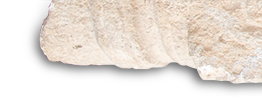Archaeological site Bošana
Situated on a gentle slope of a fertile field between the modern day towns of Biograd and Sv. Filip i Jakov on the Dalmatian coast of Croatia, villa rustica in the inlet Bošana is an important archaeological site from the Roman Empire era. The location at the gentlest part of the of coast of northern Dalmatia also provided day-long exposure to hot sun, a shore with low steep sides of red soil, and warm shallow waters with sandy floor. The Roman villa was surrounded by a rich plateau of quality red land that stretched along the coast in the length of approx. 1600 m and width of 430 m, forming about 70 acres of quality soil, which was the main basis for the existence of a Roman agricultural estate. Equally important reason for the existence of this villa was a significant seaport built on the coast, which was included in the Roman transportation route from north to south along the eastern Adriatic coast. The site for the villa was chosen very carefully: a natural cove is protected from the strong sirocco by the peninsula of the present-day Biograd, and from northeastern wind Bora by its location on the lowest part of the field, leaving it open only to the western winds and Mistral. The sea stretch in the Pašman canal in front of the villa is wide but also sheltered by the island Babac so that the Western wind, commonly occurring with storms, cannot stir up great waves. The dock built by the Romans was protected with piers from the western and southern winds, thus making Bošana a safe harbor, while the sandy bottom provided safe anchorage. In the close vicinity there are sources of potable water, especially along the coast towards Biograd where the submarine springs of fresh water that flowed into the sea were visible before the barriers were built on the coast. A special feature of the site is the connection of the villa and port in Bošana to the Roman aqueduct Iadera - Biba, which speaks of the importance this site had in Roman times.
The site continued to be suitable and favored for living throughout the post Roman period, and in the second half of the 6th century an early Christian church of St. Andrew, the patron saint of fishermen and the Byzantine Empire, was built in Bošana. The church was probably built on the site of the villa and has remained intact until the second half of the 11th century, as it was mentioned in the deed of donation by the Croatian King Petar Krešimir IV. This Croatian King was the founder of the Benedictine monastery of St. John in Biograd, to which he also donated this fertile belt by the sea along with the church, referred to as old even back in the 11th century.
The Venetians destroyed the city of Biograd in 1125, and life there faded away for the next 448 years, while the possessions of the Benedictine monastery of St. John became part of the estate of its successor, the Benedictine Abbey of St. Kosmas and Damian which was relocated to the Čokovac hill on Pašman after the destruction of Biograd. In this abbey in Bošana there was a port/pier for the needs of the abbey in Rogovo, a place where the monks from Čokovac would dock when crossing to the mainland with their boats.
The last mention of Bošana site and the Church of St. Andrew is in the description of the attack of Turkish army on Biograd in 1646, when Biograd was once more destroyed to the ground. It was from that very position that the cannons of the Turkish army fired and destroyed the Biograd walls, and attacked the Venetian galleys in Pašman channel that came to aid the military crew in Biograd. The church in Bošana, or perhaps its remains, was completely destroyed during these attacks
This important multi-layered site on the Adriatic coast had settlements in various periods in history and was a place of many activities for more than 2,000 years, and as such reflects all major historical events that have taken place in the region. Especially important was the Roman Empire period which shows us relations of the site with the indigenous inland Liburnian communities. What followed were no less important late antiquity and post Roman periods that show us the changes caused by local circumstances and impacts that external centers of power had. Particularly interesting was detection of the Byzantine period and its incidence in this poorly explored part of the Adriatic coast. Then came the period of the Croatian Kingdom when the role of the regal town of Biograd became extremely important within a wider framework of relations of that time..
Least but no less important is to not forget the beautiful surroundings. The gentle shore stretching along Bošana with a view of Biograd, as well as the islands of Pašman channel and Pašman itself, and marvelous sunsets that attract modern-day travelers perhaps even more than it did the people of the past.






